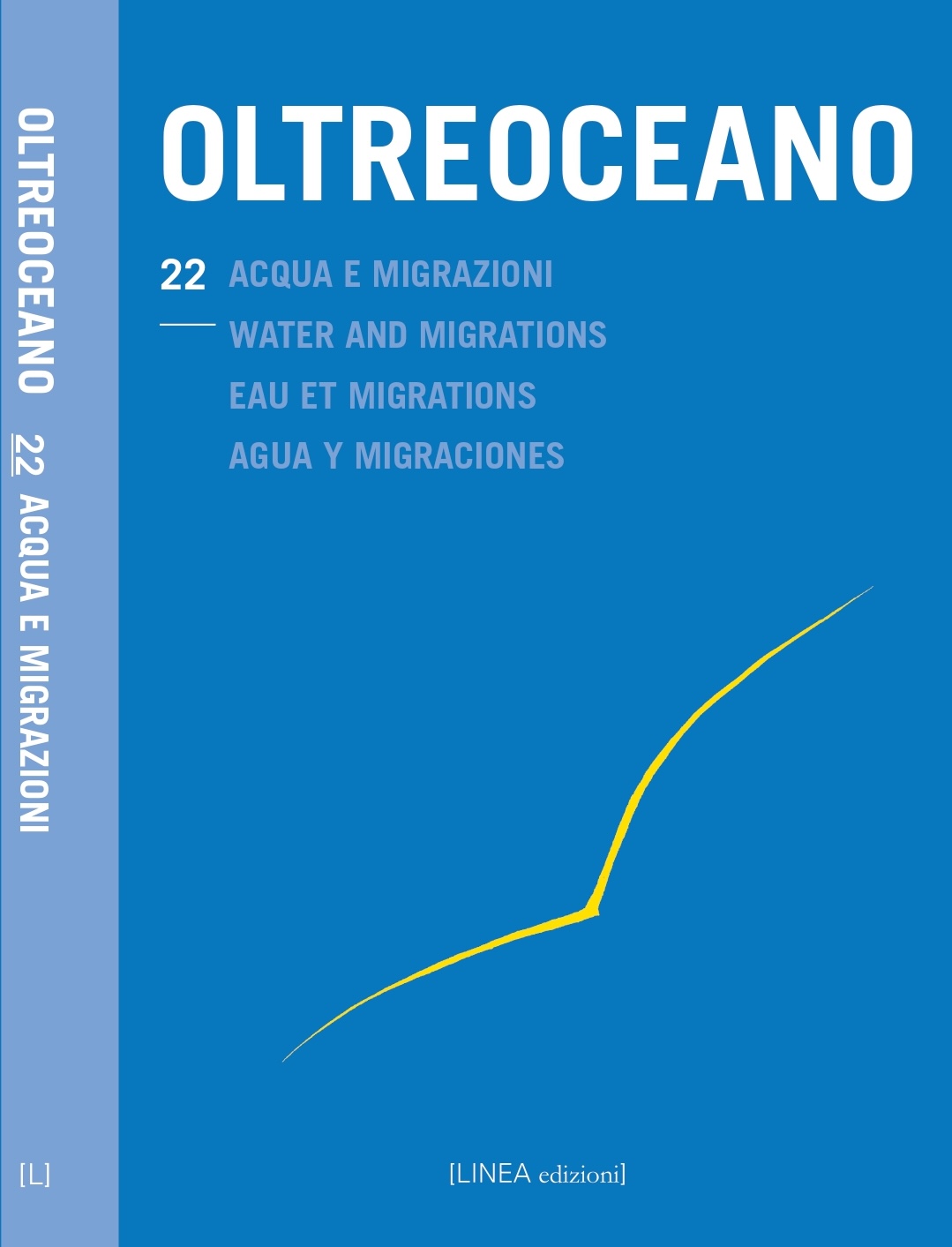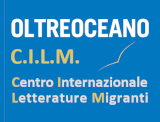North Atlantic: The Most Dangerous Water in the World
DOI:
https://doi.org/10.53154/Oltreoceano78Parole chiave:
Atlantico, gesuiti, pestilenze, martiri, Nuova FranciaAbstract
Durante il ventesimo secolo il Nord Atlantico era una delle principali rotte della migrazione di massa e una delle acque più pericolose del pianeta. Centinaia di navi vi affondarono e migliaia di persone annegarono nelle sue gelide acque. Pensiamo, per esempio, al disastro del Titanic nel 1912, la collisione dell’Empress of Ireland nel 1914, il siluramento della Lusitania nel 1915 e l’esplosione del Mont Blanc nel 1917. Durante la seconda Guerra mondiale molte navi furono affondate dai sottomarini. È alquanto ironico pertanto che questo passaggio così pericoloso sia anche diventato la principale rotta delle migrazioni di massa verso il Nord America per migliaia di immigranti alla ricerca di una nuova vita. Una di queste navi, l’Andrea Doria, si scontrò con la MS Stockholm e affondò nel 1956. Molto prima dell’era moderna, il Nord Atlantico portò malattie e morte ai popoli indigeni del Nuovo Mondo, cambiando per sempre il loro destino. Tra il 1634 e il 1640, per esempio, migliaia di indigeni Wyandot furono uccisi da un’epidemia di vaiolo e influenza nella Nuova Francia e nelle colonie inglesi più a sud. Questo contributo analizza Le Relazioni dei Gesuiti come testimonianza delle interazioni tra i popoli indigeni e i coloni francesi nel diciassettesimo secolo. L'insediamento di Quebec fu fondato nel 1608 dall'esploratore francese Samuel de Champlain che attraversò l'Atlantico circa 20 volte, morendo di un apparente ictus nel 1635, anche se non si può escludere che fosse stato infettato da una di queste malattie. Nel volume 13 delle Relazioni per l'anno 1637 Père le Mercier registra più di 130 riferimenti a febbre, malattia, contagio, malattia, epidemia, peste, sanguinamenti e morti infantili. Ci si propone di verificare cosa ci dicono i racconti di questi testimoni a proposito del comportamento umano durante le crisi sanitarie e dinanzi alla morte e a proposito della ricerca di martirio.
Downloads
Riferimenti bibliografici
Bressani, F.G. (1899): Breve Relatione d’Alcune Missoni dei PP della Compagnia di Giesu nella Nuova Francia. M. Sifton Pepper (Trans.). In R.G. Thwaites (Ed.), The Jesuit Relations and Allied Documents (Vol. 38, 39, 40). Cleveland: The Burrows Brothers.
Cro, S. (1980-1981): The Original Letter of Father Bressani Written from Fort Orange in 1644. Canadian Journal of Italian Studies 4, 1-2, pp. 26-67.
De l’Incarnation, M. (1967): Word from New France: The Selected Letters of Marie de l’Incarnation. J. Marshall (Trans. & Ed.). Toronto: Oxford University Press.
De l’Incarnation, M. (1971): Correspondence 1639-1671. Dom Guy-Marie Oury (Novelle Éd.). Sarthe, France: Abbaye Saint-Pierre de Salesmes.
Dimaline, C. (2017): The Marrow Thieves. Toronto: Cormorant Books.
Dunn, M. (2016): Neither One Thing nor the Other: Discursive Polyvalence and the Representation of Amerindian Women in the Jesuit Relations. Journal of Jesuit Studies 3, pp. 179-196.
Dunn, M. (2018): Bedside Manners: Sickness and the Jesuit Mission in Early Modern New France. Journal of Jesuit Studies 5, pp. 567-585.
Ferraro, A. (2014): Les Récits personnels de Marie de l’Incarnation ou de l’écriture autobiographoique détournée. Francofonia: Studi e ricerche sulle letterature di lingua francese 66, pp. 177-191.
Frye, N. (1971): The Bush Garden: Essays on the Canadian Imagination. Toronto: House of Anansi.
Goddard, P.A. (1998): Converting the Sauvage: Jesuit and Montagnais in Seventeenth-Century New France. The Catholic Historical Review 84, 2, pp. 219-239.
Greer, A. (2000): Colonial Saints: Gender, Race and Hagiography in New France. The William and Mary Quarterly, Third Series, 57, 2, pp. 323-348.
Mazan, R.M. (2011): Analyzing Epidemics in New France: The Measles Epidemic of 1714-1715. Electronic Thesis and Dissertation Repository, 141. Ph.D. Thesis in Sociology. The University of Western Ontario, Canada.
McShea, B. (2019): Apostles of Empire: The Jesuits and New France. Lincoln: University of Nebraska Press.
Pivato, J. (2009): An Italian Jesuit in Canada: Faith and Imagination in Bressani’s Breve Relatione of 1653. In O. Zorzi Pugliese & E.M. Kavaler (Eds.), Faith and Fantasy in the Renaissance (pp.161-169). Toronto: Centre for Reformation and Renaissance Studies.
Podruchny, C. & Labelle, L.M. (2011): Jean de Brébeuf and the Wendat Voices of Seventeenth-Century New France. Renaissance and Reformation 34, 1-2, pp. 97-126.
Richardson, J. (1991): Wacousta, or A Tale of Canada. Toronto: New Canadian Library.
Vimont, B. Ed. (1858): Relations des Jésuites contenant ce qui s’est passé de plus remarquable dans les missions des pères de la Comagnie de Jésus dans la Nouvelle France (1642-45). Quebec: Augustin Coté.
Worcester, T. (2005): Defensive Discourse: Jesuits on Disease in Seventeenth-Century New France. French Colonial History 6, pp. 1-15.
Downloads
Pubblicato
Come citare
Fascicolo
Sezione
Licenza

Questo lavoro è fornito con la licenza Creative Commons Attribuzione - Non commerciale - Condividi allo stesso modo 4.0 Internazionale.
Gli autori si impegnano a rispettare le seguenti condizioni, che s’intendono accettate al momento della sottomissione per la stampa dei propri contributi.
L’invio di un testo implica che esso sia inedito e non in attesa di essere pubblicato altrove.Gli autori si impegnano a rispettare le seguenti condizioni, che s’intendono accettate al momento della sottomissione per la stampa dei propri contributi.
- Qualora venga accettato, l’autore conferisce all’editore il diritto di pubblicarlo e distribuirlo sia in forma cartacea che nell’edizione elettronica in rete. Gli articoli pubblicati saranno scaricabili e resi disponibili in open access.
- Purché segnali correttamente che la prima pubblicazione è avvenuta sulla rivista «Oltreoceano. Rivista sulle migrazioni», l’autore ha facoltà di: a) riprodurre l’articolo in estratti separati o raccolti in volume; b) pubblicare l’articolo nel proprio sito personale o in quello di corsi di insegnamento purché si tratti di siti di natura non commerciale; c) depositare l’articolo in archivi online di carattere non commerciale, legati all’istituzione di appartenenza o come parte di progetti di diffusione non commerciale e open access dei lavori scientifici.
Non è consentita l’utilizzazione dei contributi da parte di terzi, per fini commerciali o comunque non autorizzati. L’editore declina ogni responsabilità sull’uso non autorizzato del materiale pubblicato sulla rivista.













